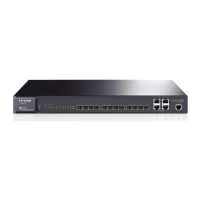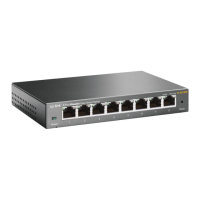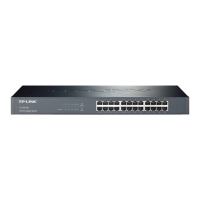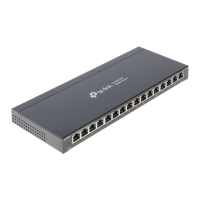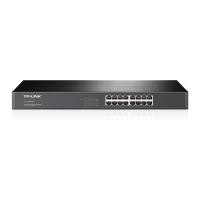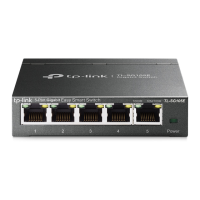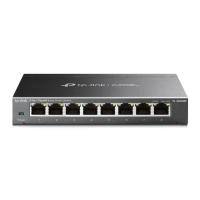150
hold-count —— TxHold Count, which is the maximum number of BPDU packets
transmitted per Hello Time interval. TxHold Count ranges from 1 to 20 in pps. By
default, it is 5.
max-hops —— Max Hops, which is the maximum number of hops that occur in a
specific region before the BPDU is discarded. Max Hops ranges from 1 to 40 in
hop. By default, it is 20.
Command Mode
Global Configuration Mode
Example
Enable the STP function, and configure the STP version as MSTP, CIST priority
as 4096, Hello Time as 4 seconds, Max Age as 10 seconds, Forward Delay as
10 seconds, TxHold Count as 8pps and Max Hops as 15 hops:
TP-LINK(config)# spanning-tree global status enable mode mstp cist 4096
htime 4 mage 10 delay 10 hcount 8 mhop 15
spanning-tree common-config
Description
The spanning-tree common-config command is used to configure the
parameters of the ports for comparison in the CIST and the common parameters
of all instances. To return to the default configuration, please use no
spanning-tree common-config command. CIST (Common and Internal
Spanning Tree) is the spanning tree in a switched network, connecting all
devices in the network.
Syntax
spanning-tree common-config [status {disable | enable}] [pri priority] [expath
expath-consum] [inpath inpath-consum] [edge {disable | enable}] [ptop {auto |
open | close}]
no spanning-tree common-config
Parameter
status —— Enable/ Disable STP function for the desired port. By default, it is
disabled.
priority —— Port Priority, which must be multiple of 16 ranging from 0 to 240. By
default, the port priority is 128. Port Priority is an important criterion on
determining if the port connected to this port will be chosen as the root port. In
the same condition, the port with the highest priority will be chosen as the root
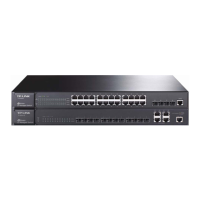
